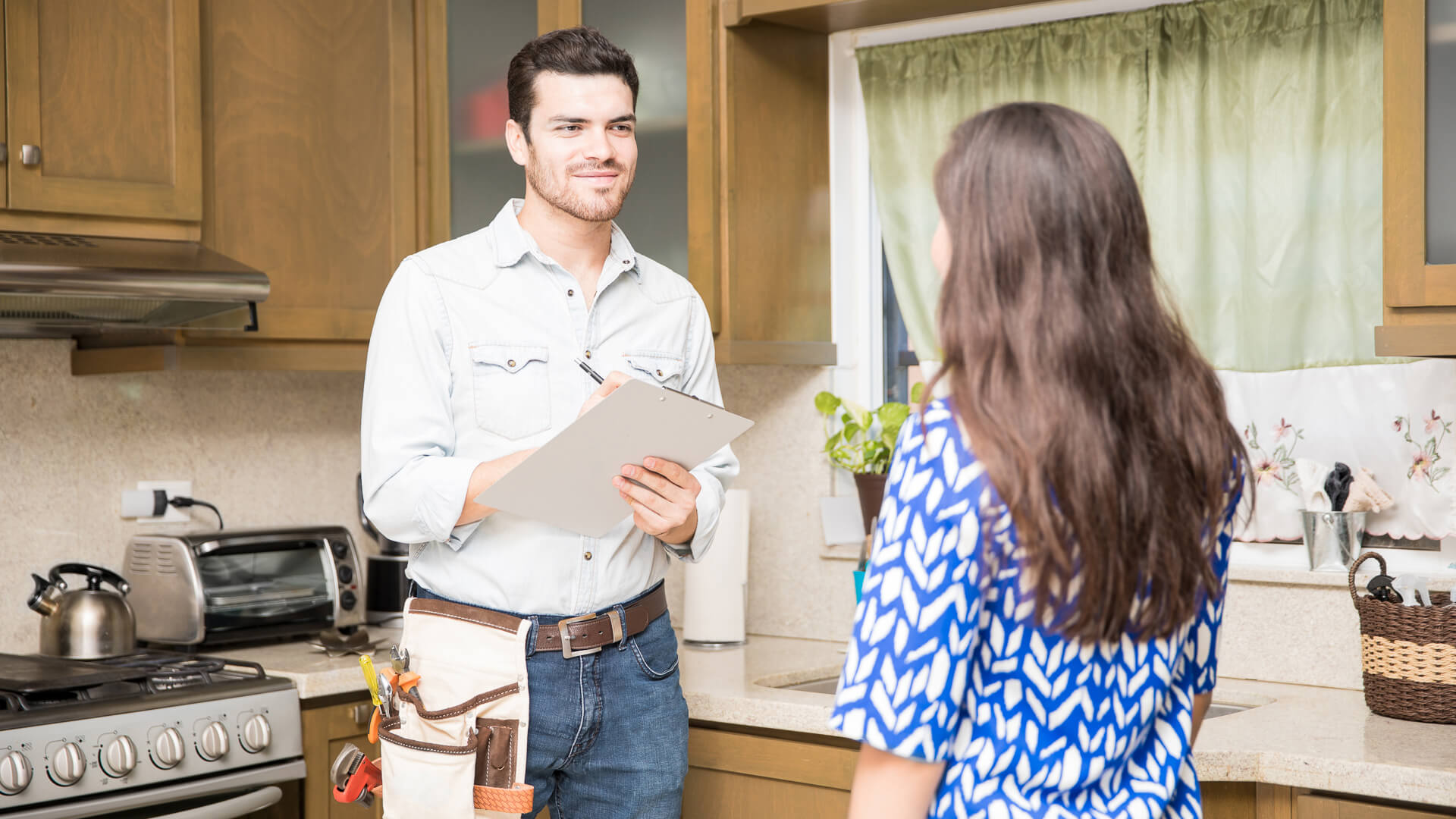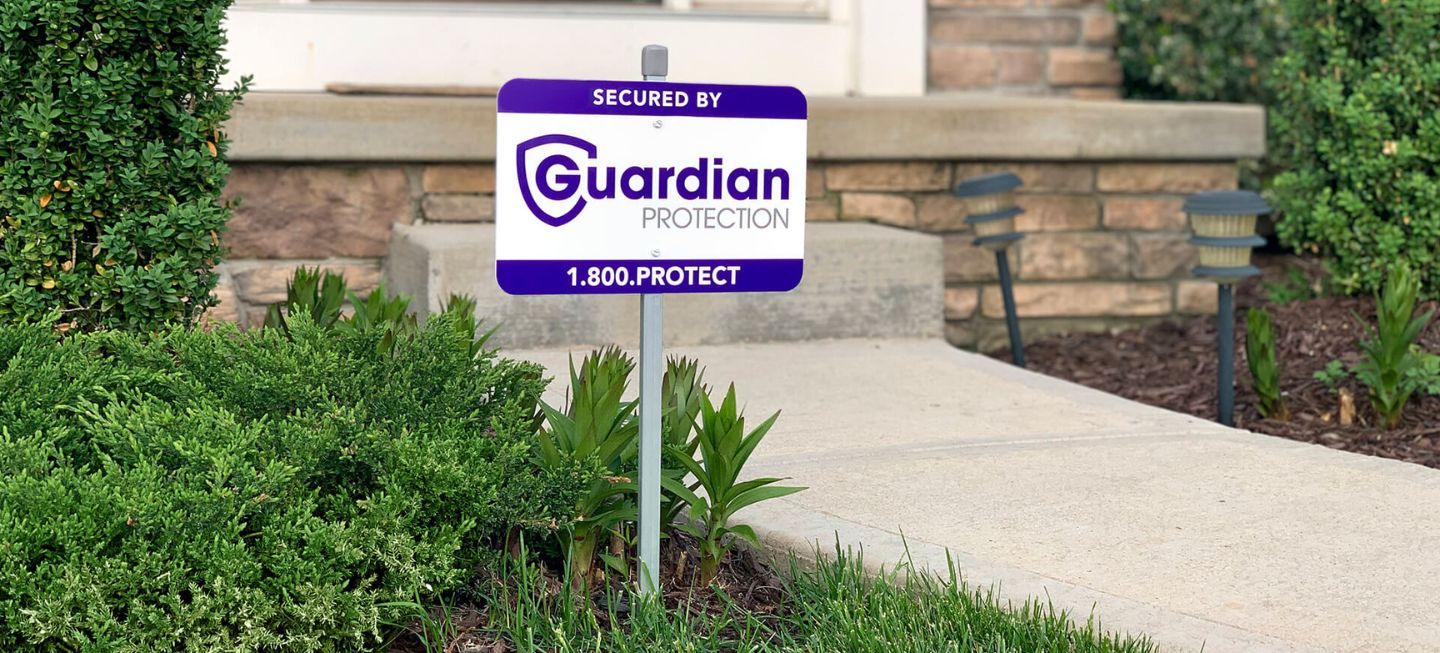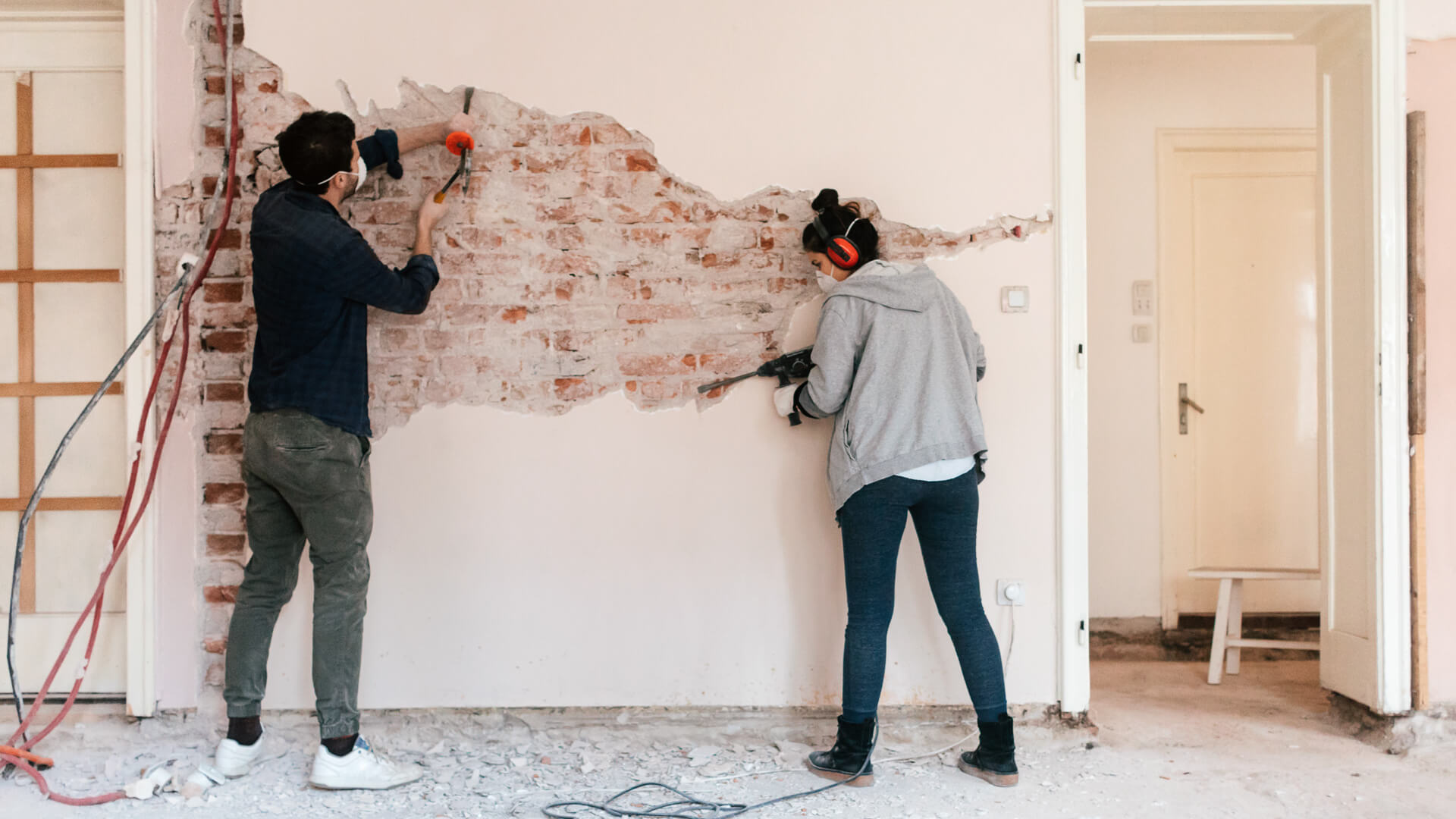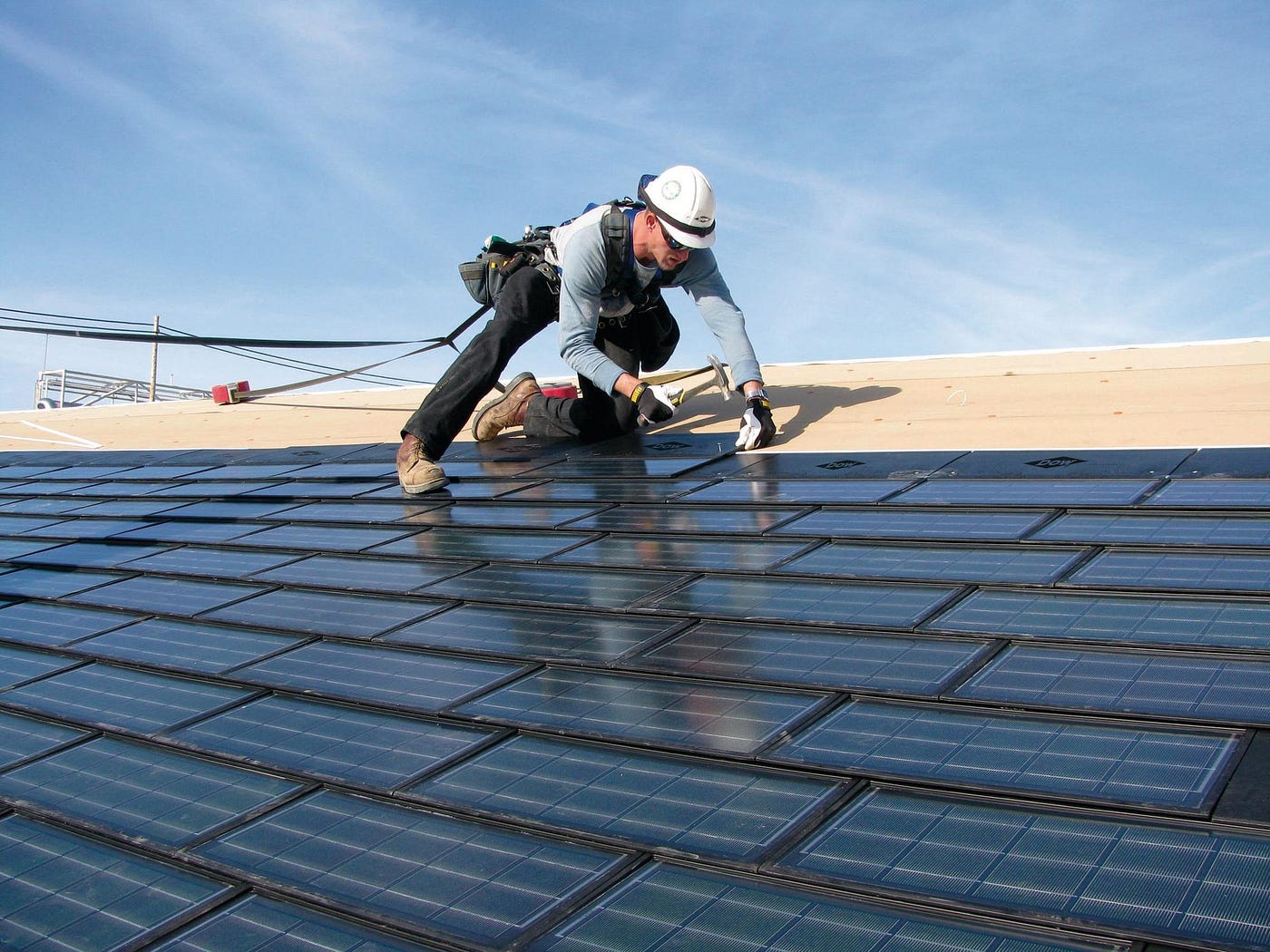Home>Home Maintenance>How To Pay For Expensive Home Repair


Home Maintenance
How To Pay For Expensive Home Repair
Modified: March 6, 2024
Looking for ways to pay for expensive home repairs? Learn how to budget and plan for home maintenance costs with our helpful tips and advice.
(Many of the links in this article redirect to a specific reviewed product. Your purchase of these products through affiliate links helps to generate commission for Storables.com, at no extra cost. Learn more)
Introduction
Many homeowners have experienced the sudden and overwhelming financial burden of expensive home repairs. Whether it’s a leaky roof, a failing HVAC system, or a cracked foundation, these unexpected issues can put a significant strain on your finances. However, don’t despair – there are several strategies you can employ to successfully navigate the payment of expensive home repairs.
In this article, we will discuss various methods to assess the cost of home repairs and provide you with practical tips on how to pay for them. From creating a budget and utilizing savings to exploring government assistance programs and negotiating with contractors, we will cover a wide range of options to help you handle even the most costly home repairs.
So, let’s dive in and discover the best ways to pay for expensive home repairs while keeping your financial well-being intact.
Key Takeaways:
- Plan ahead by saving and budgeting for home repairs to avoid financial strain when unexpected issues arise.
- Explore various financing options such as government assistance, insurance, and loans to cover the costs of expensive home repairs.
Read more: How To Pay For A Home Improvement Project
Assessing the Cost of Home Repair
Before you can effectively plan how to pay for expensive home repairs, it’s crucial to assess the cost of the project accurately. This step will give you a clear understanding of the financial commitment required and help you determine the most appropriate funding options. Here are some key factors to consider when assessing the cost of home repair:
- Evaluate the extent of the damage: Carefully inspect the affected area and determine the scope of the repair needed. If possible, consult with a professional contractor or a home inspector who can provide a detailed assessment and estimated costs.
- Consider the materials and labor required: Research the prices of materials and labor in your area to get an idea of the overall expenses. Keep in mind that higher-quality materials or specialized labor may come with a higher price tag.
- Factor in additional related expenses: Sometimes, home repairs may lead to additional costs such as permits, inspections, or temporary accommodation during the repair process. Be sure to account for these potential expenses in your cost assessment.
- Anticipate future maintenance: While focusing on the immediate repair, consider any ongoing maintenance or preventive measures needed to avoid similar issues in the future. This may involve additional expenses that should be factored into your assessment.
By carefully assessing the costs associated with your home repair, you will have a more accurate idea of the amount you need to budget for and the potential funding sources you can explore.
Budgeting for Home Repairs
Once you have assessed the cost of your home repair project, creating a budget becomes essential for managing your finances effectively. A well-planned budget helps you allocate funds and prioritize expenses, ensuring you have the necessary funds available when needed. Here are some tips to help you budget for home repairs:
- Start saving early: If possible, begin saving for potential home repairs as soon as you become a homeowner. By setting aside a portion of your income regularly, you can build up a dedicated repair fund over time, which can alleviate the financial burden when repairs become necessary.
- Research and compare prices: Take the time to research and compare prices for materials and services needed for your repair. Get multiple quotes from contractors and suppliers to ensure you are getting the best possible price without compromising quality.
- Break down your expenses: Divide your repair costs into smaller, manageable categories. This allows you to allocate funds more effectively and plan for each expense separately.
- Trim unnecessary expenses: Temporarily cut back on non-essential expenses to free up more funds for your home repair budget. Evaluate your monthly spending habits and identify areas where you can reduce costs, such as dining out or entertainment.
- Consider DIY options: Depending on your skills and the complexity of the repair, you may be able to tackle some of the work yourself. This can significantly reduce labor costs. However, be honest about your capabilities and know when it’s best to leave it to the professionals.
Remember, creating a budget is not a one-time task. Continuously review and adjust your budget as the repair project progresses and unexpected expenses arise. Flexibility and adaptability are key when it comes to successfully budgeting for home repairs.
Savings and Emergency Funds
When it comes to paying for expensive home repairs, having savings and emergency funds can be a lifeline. These financial resources can help bridge the gap between the cost of repairs and your available budget. Here’s how you can leverage savings and emergency funds:
- Prioritize building an emergency fund: Set aside a portion of your income specifically for emergencies, including home repairs. Aim to save at least three to six months’ worth of living expenses in an easily accessible account.
- Tap into your existing savings: If you have savings accounts earmarked for other purposes, such as a down payment for a house or a vacation fund, consider utilizing a portion of these funds to cover your home repair costs.
- Explore short-term savings options: If your repair expenses are significant and you anticipate needing additional funds, consider withdrawing from short-term savings options like certificates of deposit (CDs) or money market accounts to supplement your budget.
- Consider a home equity loan or line of credit: If you have equity in your home, you may be able to tap into it through a home equity loan or line of credit. This allows you to borrow against the value of your property at potentially favorable interest rates, providing you with the funds needed for home repairs.
- Evaluate the impact on your overall financial goals: Before using savings or emergency funds, assess how it will affect your long-term financial goals. Consider the potential impact on retirement savings, education funds, or other financial priorities before making a decision.
Having savings and emergency funds gives you a sense of financial security and peace of mind. It is always wise to have a safety net to rely on when unexpected expenses such as home repairs arise.
Government Assistance Programs
When faced with the financial burden of expensive home repairs, it’s worth exploring various government assistance programs that may be available to homeowners. These programs are designed to provide financial aid and resources to individuals in need. Here are some government assistance options to consider:
- HUD Rehabilitation and Repair Programs: The U.S. Department of Housing and Urban Development (HUD) offers various programs that provide grants and loans to homeowners for home repairs. These programs cater to low-income individuals and aim to improve living conditions and safety in homes.
- USDA Rural Housing Repair Loans and Grants: The U.S. Department of Agriculture (USDA) provides loans and grants to homeowners in rural areas who need assistance with home repairs or improvements. These programs are specifically targeted towards low-income households.
- State and Local Housing Programs: Many states and local municipalities have their own housing assistance programs that provide financial aid for home repairs. These programs may include grants, loans, or tax credits, and eligibility requirements vary by location.
- Energy Efficiency Programs: Some government programs focus on promoting energy-efficient home repairs and improvements. These programs may offer financial incentives, rebates, or low-interest loans to homeowners who undertake energy-saving upgrades, such as insulation, HVAC system replacements, or solar panel installations.
- Weatherization Assistance Program: The Weatherization Assistance Program (WAP), funded by the U.S. Department of Energy, helps low-income households reduce energy costs by improving the energy efficiency of their homes. This includes repairs and upgrades such as sealing air leaks, adding insulation, and upgrading appliances.
When applying for government assistance programs, be prepared to provide documentation and meet specific eligibility criteria. It’s essential to research and understand the requirements of each program to determine if you qualify and to ensure a smooth application process.
Government assistance programs can be a valuable resource in funding expensive home repairs, so it’s worth exploring what options are available in your area.
Read more: How To Make Home Decor Expensive
Homeowners Insurance
When it comes to paying for expensive home repairs, homeowners insurance can be a saving grace. Homeowners insurance is a type of insurance policy that provides coverage for damages to your home due to covered perils, such as fire, hail, or vandalism. Here’s how to make the most of your homeowners insurance when it comes to home repairs:
- Review your policy: Take the time to review your homeowners insurance policy and understand the coverage it provides for home repairs. Familiarize yourself with the deductible, the maximum coverage amounts, and any exclusions or limitations.
- File a claim: If your home experiences damage from a covered peril, promptly file a claim with your insurance company. The claims process typically involves contacting your insurance agent, providing documentation of the damage, and cooperating with any inspections or assessments required.
- Document the damage: Take clear photographs and videos of the damage to provide as evidence for your claim. Make a detailed list of all affected items and their approximate value to assist in the claims process.
- Understand your deductible: The deductible is the amount you are responsible for paying out of pocket before the insurance coverage kicks in. Be aware of your deductible amount and consider whether the repair costs exceed this threshold.
- Engage with the insurance adjuster: Once you file a claim, an insurance adjuster will assess the damage and determine the cost of repairs. Stay in communication with the adjuster and provide any additional documentation or information they may need to process your claim effectively.
- Explore additional coverage options: Some homeowners insurance policies offer additional coverage options, such as extended replacement cost coverage or additional living expense coverage. These options can help cover the cost of repairs that exceed the policy’s initial coverage limits.
While homeowners insurance can provide significant financial relief for home repairs, it’s important to note that not all repairs may be covered. Some policies exclude certain types of damage, such as normal wear and tear or damage caused by neglect. Reviewing your policy and understanding its limitations is crucial.
Remember to consult with your insurance agent or representative to fully understand your coverage and the claims process. By leveraging your homeowners insurance effectively, you can minimize the financial impact of expensive home repairs.
Personal Loans
When faced with the need for expensive home repairs and lacking the necessary funds, personal loans can be a viable option to consider. Personal loans allow you to borrow a specific amount of money from a bank, credit union, or online lender, which you can then use for home repairs. Here’s what you need to know about personal loans:
- Check your credit score: Before applying for a personal loan, it’s important to know your credit score. Lenders typically have minimum credit score requirements, and a higher credit score can improve your chances of qualifying for a loan and securing favorable terms.
- Compare interest rates and loan terms: Shop around and compare interest rates, loan terms, and fees from different lenders. Look for a loan with a competitive interest rate and a repayment period that works best for your financial situation.
- Consider secured vs. unsecured loans: Personal loans can be either secured or unsecured. Secured loans require collateral, such as your home or car, which the lender can seize if you default on the loan. Unsecured loans, on the other hand, do not require collateral but may have higher interest rates.
- Calculate your repayment ability: Assess your income, expenses, and financial obligations to determine how much you can comfortably afford to borrow and repay. Use loan calculators or consult with lenders to estimate your monthly payments and ensure they fit within your budget.
- Read the terms and conditions: Carefully review the loan agreement, including the interest rate, repayment period, fees, and any penalties for early repayment. Understand the total cost of the loan, including all associated fees, before making a commitment.
- Apply for the loan: Once you have selected a lender, complete the loan application process. Provide the necessary documentation, such as income verification and identification, and wait for the lender’s decision. If approved, carefully review the loan offer before accepting.
Personal loans can provide you with the funds needed for home repairs, allowing you to address the issue promptly. However, it’s crucial to borrow responsibly and ensure that you can comfortably afford the loan repayments.
Before committing to a personal loan, consider whether alternative funding options, such as savings or government assistance programs, are available to you. Evaluating the overall costs and benefits of each option will help you make an informed decision about financing your home repairs.
Consider using a home equity loan or line of credit to pay for expensive home repairs. These options typically have lower interest rates and can be tax-deductible.
Home Equity Loans or Lines of Credit
If you have built up equity in your home, another option to consider for financing expensive home repairs is a home equity loan or a home equity line of credit (HELOC). These options allow homeowners to borrow against the value of their home. Here’s what you should know about home equity loans and HELOCs:
- Understand the difference: A home equity loan is a lump sum loan with a fixed interest rate and predictable monthly payments. On the other hand, a HELOC is a revolving line of credit with a variable interest rate, similar to a credit card, where you can borrow and repay multiple times.
- Evaluate your needs: Assess the scope and cost of your home repairs to determine whether a home equity loan or a HELOC is a better fit. A larger, one-time expense may be suitable for a home equity loan, while ongoing repair projects may benefit from a HELOC’s flexibility.
- Check your equity: Calculate your home’s value and subtract any outstanding mortgage balance to determine how much equity you have available. Lenders typically require a certain level of equity, often around 80%, before approving a home equity loan or HELOC.
- Shop around for rates and terms: Compare offers from different lenders to find the most favorable interest rates and terms. Consider the length of the loan or draw period, repayment options, and any associated fees or closing costs.
- Weigh the risks: Remember that home equity loans and HELOCs use your home as collateral. If you fail to make payments, you could risk losing your home. Be sure to understand the terms and consequences before borrowing against your home’s equity.
- Use funds wisely: Once approved for a home equity loan or HELOC, use the funds solely for your home repairs. Resist the temptation to use the funds for other purposes to avoid further financial strain or jeopardize your home’s equity.
Home equity loans and HELOCs offer homeowners a means to access a significant amount of funds for home repairs. However, it’s essential to carefully consider your financial situation and assess the risks before proceeding. Consulting with a financial advisor or mortgage specialist can provide valuable guidance in determining the most suitable option for your needs.
Contractor Financing Options
When facing expensive home repairs, another potential financing option to consider is contractor financing. Some contractors offer financing programs or partnerships with lending institutions to help homeowners cover the costs of their services. Here’s what you need to know about contractor financing options:
- Research contractors with financing options: Look for contractors who advertise financing options or inquire about financing availability when obtaining quotes. Some contractors may have partnerships with lenders or offer in-house financing programs.
- Understand the terms and interest rates: Similar to other financing options, contractor financing programs may come with specific terms and interest rates. Take the time to understand these terms and evaluate if they align with your financial goals and repayment capabilities.
- Ask about promotional offers: Contractors offering financing options may have promotional offers, such as low or no-interest financing for a limited period. Inquire about any special promotions or discounts available and assess if they benefit your specific situation.
- Review the contractor’s reputation: Before committing to financing through a contractor, research their reputation, experience, and customer reviews. It’s important to work with a reputable contractor who delivers quality work and provides reliable financing options.
- Compare with other financing options: While contractor financing can be convenient, it’s important to compare the terms and interest rates with other financing options, such as personal loans or home equity loans. Ensure you are getting the best possible terms and rates for your specific needs.
- Read the fine print: Before signing any financing agreements, carefully read the terms and conditions. Ensure you understand all fees, repayment schedules, and any potential penalties or charges for late payments or early repayment.
Contractor financing options can be a convenient way to cover the costs of your home repairs, especially if you prefer working with a specific contractor. However, it’s crucial to conduct your due diligence and review the terms and conditions to ensure it is the right choice for your financial situation.
Remember, not all contractors offer financing options, so it’s essential to inquire and explore alternative financing options if contractor financing is not available or suitable for your needs.
Read more: How To Pay For Home Improvement CT License
Credit Cards
Using a credit card to pay for expensive home repairs can be a convenient financing option, especially if you have a card with a high enough credit limit. However, it’s essential to approach credit card usage responsibly to avoid high interest charges and potential debt. Here’s what you need to know about using credit cards for home repairs:
- Check your credit limit and interest rate: Assess your credit card’s available credit limit and the interest rate associated with purchases. Understanding these details will give you an idea of how much you can charge to your card and the potential cost of carrying a balance.
- Weigh the benefits and risks: While credit cards offer convenience, benefits, and potential rewards, they also come with risks. High-interest rates and fees can quickly accumulate, and carrying a balance for an extended period can lead to significant debt. Evaluate the pros and cons before deciding to use a credit card for home repairs.
- Consider introductory offers and promotions: Some credit cards may offer promotional deals with 0% interest on purchases for an introductory period. If available, these offers can be beneficial for financing home repairs without incurring additional interest charges, as long as you pay off the balance before the promotional period ends.
- Create a repayment plan: Before charging home repairs to your credit card, develop a solid repayment plan. Determine how much you can afford to pay each month and strive to pay off the balance as quickly as possible to minimize interest charges.
- Utilize credit card rewards: If your credit card offers rewards or cashback programs, use your home repairs as an opportunity to maximize these benefits. Check if there are any special promotions or bonus categories that can help you earn additional rewards on your purchases.
- Be mindful of your credit utilization: Charging a large amount to your credit card for home repairs can significantly impact your credit utilization ratio. Keep in mind that high credit utilization can potentially lower your credit score. Try to keep your utilization ratio as low as possible by making timely payments or consider making multiple payments throughout the billing cycle.
Credit cards can provide a practical solution for financing home repairs, especially for smaller-scale projects. However, it’s crucial to use them responsibly, monitor your spending, and have a clear repayment plan in place to avoid falling into debt or paying excessive interest charges.
If the cost of your home repairs exceeds your credit limit or if the interest rates on your existing credit cards are excessively high, consider exploring alternative financing options such as personal loans, home equity loans, or contractor financing.
Crowdfunding
Crowdfunding has become a popular method of financing various projects, including home repairs. It involves reaching out to a large number of people online and inviting them to contribute money towards your cause. Here’s what you need to know about using crowdfunding for home repairs:
- Choose the right crowdfunding platform: Explore different crowdfunding platforms to find one that aligns with your needs. Look for platforms that specialize in home improvement projects or general crowdfunding platforms that allow for any type of fundraising.
- Create a compelling campaign: Craft a well-written and engaging campaign that clearly explains your home repair needs, the costs involved, and why you are seeking financial assistance. Include high-quality images or videos to help convey your message effectively.
- Set a realistic fundraising goal: Determine the amount of money you need to cover your home repair expenses and set a realistic fundraising goal. Be transparent about how you arrived at this figure and provide a breakdown of the costs involved.
- Share your campaign widely: Utilize social media, email lists, and personal networks to spread the word about your crowdfunding campaign. Encourage family, friends, and supporters to share your campaign with their own networks to expand your reach.
- Offer incentives or rewards: To incentivize potential donors, consider offering rewards or perks for different donation levels. These can range from personalized thank you notes to special acknowledgments or even small tokens of appreciation.
- Provide regular updates: Keep your donors updated on the progress of your home repairs. Share photos or videos documenting the work being done and express gratitude for their contributions. This helps build trust and keeps donors engaged in your campaign.
- Express sincere appreciation: Take the time to personally thank each donor and express your genuine gratitude for their support. A heartfelt thank you goes a long way in maintaining strong donor relationships and creating a positive crowdfunding experience.
- Be transparent with your spending: Once you have successfully raised funds for your home repairs, be transparent about how the money is being used. Provide updates on the progress of the repairs and ensure that the funds are allocated exactly as promised in your campaign.
Crowdfunding can be an effective way to gather financial support for your home repairs, especially if you have a compelling story and a wide network of supporters. However, keep in mind that success is not guaranteed, and it may take time and effort to reach your fundraising goal.
Before embarking on a crowdfunding campaign, familiarize yourself with the specific terms, fees, and guidelines of the crowdfunding platform you choose. Ensure you comply with any legal and tax requirements associated with receiving and managing donated funds.
Negotiating with Contractors
When it comes to expensive home repairs, negotiating with contractors can help you reduce costs and find favorable payment terms. By honing your negotiation skills and considering different approaches, you may be able to secure a more affordable deal. Here are some tips for negotiating with contractors:
- Get multiple quotes: Reach out to several contractors and request detailed quotes for your home repairs. Having multiple options allows you to compare prices, services, and timelines, giving you leverage during negotiations.
- Do your research: Before entering negotiations, gather information about the average prices for similar repairs in your area. This knowledge will help you set realistic expectations and determine what is a fair price.
- Highlight your budget constraints: Let the contractor know upfront about your budget limitations. By being transparent, you create an opportunity for the contractor to propose cost-saving alternatives or find creative solutions to meet your needs.
- Focus on value, not just price: While price is an important factor, also consider the value provided by the contractor. Look for a balance of quality workmanship, experience, and reliable customer service. A higher price may be justified by superior service and expertise.
- Discuss payment terms: Negotiate favorable payment terms that align with your financial situation. Consider options such as phased payments based on milestones achieved or the availability of financing options through the contractor.
- Mention competitors and alternative quotes: If you have received lower quotes from other contractors, strategically mention them during negotiations. This can encourage the contractor to revise their proposal or offer additional incentives to secure your business.
- Seek clarification on the scope of work: Make sure you have a clear understanding of what is included in the contractor’s proposal. Seek clarification on any vague or ambiguous items to avoid future unexpected costs.
- Negotiate add-ons separately: If you require additional work or services beyond the initial scope, negotiate the cost of these add-ons separately. This ensures transparency and prevents any confusion or disputes over pricing.
- Build a good rapport: Establishing a positive and respectful relationship with the contractor can go a long way in negotiations. Treat them with professionalism, communicate clearly, and express your appreciation for their expertise and willingness to work with you.
Remember, successful negotiation is a give-and-take process. Be flexible and open to finding a compromise that satisfies both parties. Negotiating with contractors can help you achieve more favorable terms and ultimately save money on your home repairs.
Conclusion
When faced with the prospect of expensive home repairs, finding the means to pay for them can be a challenging endeavor. However, by employing a combination of strategies and exploring various financing options, you can successfully navigate the financial burden and ensure your home is safe, functional, and well-maintained.
In this article, we discussed several approaches to help you finance your home repairs. Assessing the cost of repairs, creating a budget, and exploring savings and emergency funds are important initial steps. Additionally, government assistance programs, homeowners insurance, personal loans, home equity loans, contractor financing options, credit cards, crowdfunding, and negotiating with contractors are all viable methods to consider.
It is crucial to approach each financing option with careful consideration, weighing the benefits, risks, and potential long-term implications. Reviewing terms, interest rates, repayment plans, and eligibility criteria will help you make informed decisions that align with your financial goals.
Remember, no single approach fits every situation. The best strategy may involve combining multiple funding sources or adapting to your specific circumstances. It is essential to choose the method or combination of methods that align with your financial situation, providing the necessary resources while minimizing financial stress.
Lastly, always prioritize maintaining a healthy financial foundation. Practice responsible borrowing, continually evaluate your budget, and build an emergency fund for future unexpected expenses. By adopting a proactive and thoughtful approach, you can better manage the financial aspects of home repairs and ensure the long-term well-being of your home.
In conclusion, while expensive home repairs can be financially daunting, there are numerous options available to help you cover the costs. Through careful planning, research, and smart decision-making, you can overcome financial hurdles and ensure that your home remains a safe and comfortable haven for you and your loved ones.
Frequently Asked Questions about How To Pay For Expensive Home Repair
Was this page helpful?
At Storables.com, we guarantee accurate and reliable information. Our content, validated by Expert Board Contributors, is crafted following stringent Editorial Policies. We're committed to providing you with well-researched, expert-backed insights for all your informational needs.













